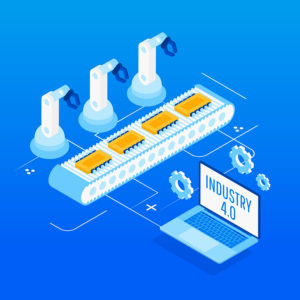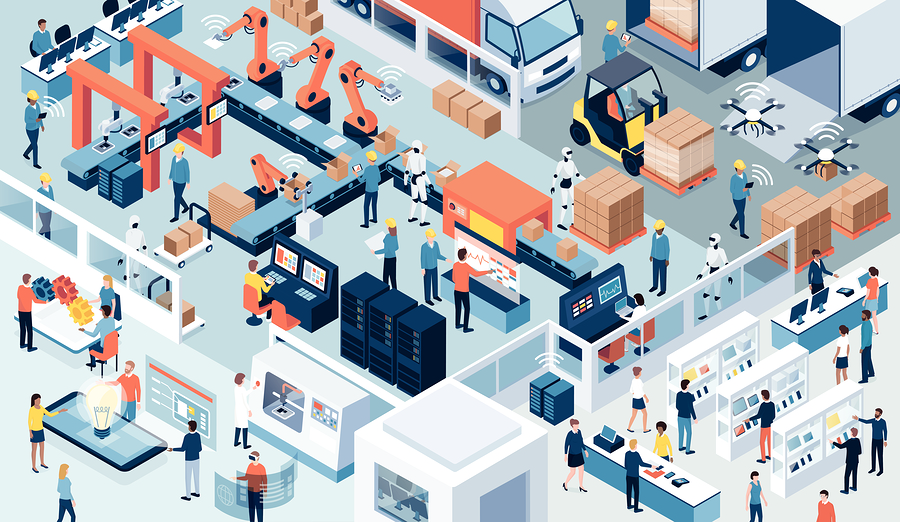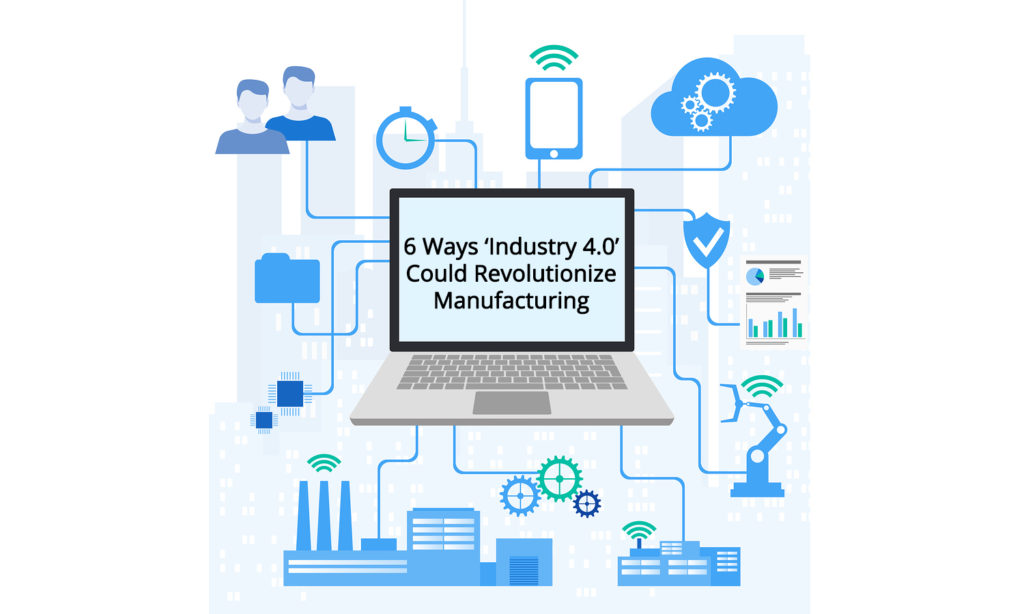The American Industrial Revolution started around 1790 and continued through the 1830s. The shift from an agrarian to a manufacturing society didn’t happen overnight, and each subsequent shift in our economy has taken its own time to play out. We’re amid another transition: The transition to Industry 4.0.
Called the Fourth Industrial Revolution because of the impact it may have on manufacturing, this promising new era seems to be the wave of the future. But what is Industry 4.0, and how sweeping are the changes? More important, when will we see them come to fruition?
The new age has already begun
 Industry 4.0 catalysts are already rippling across the manufacturing industry. The budding technologies that will transform the way we work are in their infancy — they’re buzzwords and technologies we’re just now starting to learn and use. The most recognizable are today’s hottest topics:
Industry 4.0 catalysts are already rippling across the manufacturing industry. The budding technologies that will transform the way we work are in their infancy — they’re buzzwords and technologies we’re just now starting to learn and use. The most recognizable are today’s hottest topics:
- Industrial internet of things (IIoT)
- Big data
- Augmented and virtual realities
- The cloud
- Additive manufacturing
- Blockchain
While we can do amazing things with big data and already employ the cloud, we’re only on the cusp of utilizing these innovations to their truest potential. Industry 4.0 has begun, but it’s far from sweeping at this stage.
Harnessing tomorrow’s technologies today
Because we’re building Industry 4.0 on technologies that go beyond human potential, we’re starting to see manufacturing capabilities beyond what was possible even a decade ago. As engineers further develop Industry 4.0 technologies, they’re likely to cultivate a future rife with opportunities. Some of the biggest changes include:
1. Automation — Today, automation powers entire factories capable of working with little to no human oversight. In the future, automation is likely to advance again. Automation complexity could even increase and extend to previously unautomated processes, such as maintenance or quality control.
2. Obsolescence — With the next wave of manufacturing technologies, we could see an unprecedented mass extinction of staple technologies and practices. Just like the cotton gin transformed an entire economy, Industry 4.0 innovations could again shift the natural order of manufacturing, antiquating a large swath of current tech.
3. Globalization — The global economy is more prominent than ever and growing continuously. Manufacturing is following. Being able to have a global presence with oversight and control through Industry 4.0 technologies is a vital next step in allowing businesses of all sizes to compete worldwide.
4. Innovation — Industry 4.0’s new technology could bring with it a surge of innovation, allowing manufacturers to operate more efficiently, with greater agility, and at lower costs. Cost savings could result in benefits for all shareholders and consumers, leading to newfound industry stability.
5. Efficiency — Automation, innovation, and robust technologies could culminate in efficiency that propels manufacturing into a new era of dominance. Much like eCommerce has revolutionized the retail landscape, Industry 4.0 could herald unprecedented efficiency in manufacturing operations.
6. Connectivity — Already available in the form of Software-as-a-Service (SaaS) and Platform-as-a-Service (PaaS) models, connectivity could define the future manufacturing facility. Taking data out of silos and aggregating it is a shift manufacturers are already embracing and could continue to grow exponentially through more IIoT devices and the data they gather.

These core advancements could be bullet points on the future timeline of Industry 4.0 adoption — and for good reason: Each subsequent benefit has the potential to propel manufacturers forward.
Pacing the change of Industry 4.0
Industry 4.0 is still in its infancy, which means revolutionary change is yet to come. For now, savvy manufacturers are adopting some of the early-stage trends gently nudging the industry toward that change.
Exploring big data aggregations is one of the easiest ways to enter the Industry 4.0 evolution. Monitoring maintenance data trends IIoT devices provide, for example, can clue manufacturers into predictive maintenance needs. Alternatively, identifying repetitive tasks and finding a way to automate them can acclimate manufacturers to future processes.
Though it may not seem like it, technological advances drive the manufacturing industry. The next wave is coming, and it’s likely to have far-reaching effects that make the original Industrial Revolution seem minor by comparison.
